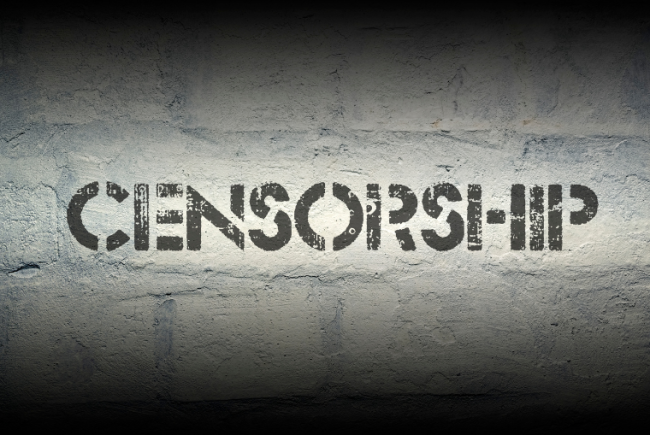You have /5 articles left.
Sign up for a free account or log in.

yuriz/Getty Images
“Anybody who thinks that they can modify what they’re doing and be safe is deeply mistaken, because authoritarianism is never about creating conditions for anybody to be safe.”
These words, as spoken by a soon-to-be-former assistant professor at the University of Texas at San Antonio, grabbed my attention. She was describing her approach to teaching about slavery as part of one last summer course before relocating to a Canadian university.
Her point, that we cannot simply modify our approach and continue as before, is one that I have been too slow to recognize. I believe that many of us, especially white people like me, have somehow believed that by being quiet or unobtrusive, we can fly under the radar, let things pass.
But this is wrong. The attacks on higher education and on our teaching about topics related to race and racism have only intensified.
In the early days of this backlash, as marked by the signing of an executive order in September 2020 by then president Trump, I felt frightened but relatively confident that I could continue my work. I teach regularly about race and racism, and I work with others to help them develop their skills in teaching about it, too.
In reading the words of that original order and the copycat bills that followed, I felt assured. Those words did not describe what I do or what most of us do in teaching about racism. We do not engage in “race and sex scapegoating”; we do not teach “divisive concepts” or compel students to believe that they are inherently racist.
Instead, our work is about teaching and learning. We provide perspectives and facts, including many that were probably denied to our students in earlier schooling. And while we know that learning about race and racism can be challenging, we also know how necessary it is and how it can liberate our students, allowing them to make better sense of the world.
As I talked to thoughtful colleagues doing similar work, I realized I was not alone in my assumptions. Many of us seemed to believe that if we could just keep our course titles and reading lists vague, we could proceed. Modify and stay safe.
The reality, of course, is that for those who want to censor us, modifications will never be enough.
Earlier this year, the Florida College System presidents attempted to appease their legislators by proclaiming they would not “compel” students to believe in critical race theory or “related concepts.” In so doing, they collaborated directly with the Florida Department of Education.
Their apparent goal was to carve out a path that would comply with political interference by parsing the difference between “compelling belief” and “teaching.”
As Matt Reed pointed out, however, this can only work when both parties are negotiating in good faith. In this context, legislators have made it clear that they will not tolerate ideas other than their own. Compelling and teaching mean the same thing in their worldview. They simply want to shut us down.
Despite this reality, many in higher education, especially those with the most power and privilege, have continued to follow this same flawed reasoning: modify and stay safe.
Administrators have voluntarily dismantled diversity, equity and inclusion offices; banned the use of diversity statements in hiring; or offered only silence in the face of legislative attacks. And while these attempts at compromise may be understandable, they are clearly ineffective.
It is long past time for us to recognize that our relative power and privilege will not keep us safe. We cannot modify our way out of this. We must remember our values and use whatever power and privilege we have to push back, individually and collectively.
First, we must continue to teach about race and racism. Racism is harmful to all our students. It increases the cost of their education, endangers their health and is incompatible with our democracy. We owe all our students the truth about racism, and we especially owe this to our students of color.
Teaching about racism has never been easy. It is not easy now. But there are ways to teach about racism that allow students the time and space to learn, even when they feel upset or resistant. These feelings and reactions are normal, and they will vary depending on the identity of the student and the context, but we can understand these reactions and work with them.
Good teaching will not insulate us from specious claims of indoctrination, but good teaching can help us reach more students more effectively and prevent unnecessary conflict.
Next, as colleagues, we must recognize that teaching about racism is not the same for everyone. People of color are more likely to teach these courses and often face credibility challenges, resistance and negative emotions from students. The emotional toll of doing this work is significant.
Because of this reality, we need to think more critically about how we assign these courses to one another and provide better support to those doing the teaching, especially when it comes to teaching evaluations.
We often extend grace to those who teach STEM courses, methods courses and large general education sections. We expect their teaching evaluations might be a bit lower. We need to extend this grace to those teaching about racism or other socially sanctioned topics, especially when the instructor is a person of color.
Finally and most importantly, all of us in higher education need to understand that the only way to continue our work is to organize against political interference and push back. Together. Individual modifications alone and attempts at appeasement will not work.
As administrators, faculty and staff, we are so often divided from one another, believing that the others “just don’t get it.” But if we look critically, we can see that we are all reacting against the same powerful anti-education forces.
We do not have to compromise with those who, fundamentally, do not believe in educating students honestly. It really can be that simple. But we must work together.
One heartening example of how this can look in practice is currently playing out in Ohio. Earlier this year, the Ohio State University Board of Trustees, along with the presidents of several other Ohio universities and the Ohio State Association of Community Colleges, spoke out clearly and forcefully against Senate Bill 83, a rare move for public university leadership.
The bill, which would prohibit mandatory DEI programs, require the posting of undergraduate syllabi and the evaluation of professors with respect to classroom atmosphere, and restrict collective bargaining rights, passed the Ohio Senate in May; as of this writing, however, it has not passed the House of Representatives. Students, faculty, staff and administrators have continued to protest and speak out, weakening its progression.
We can learn from their example. Higher education is and should be a public good. Educating students honestly and fully is in the public interest.
If you are unsure where to start, consider a simple beginning: talk more openly with your colleagues about what is happening. Do not limit yourself to those who do the same kind of work as you. Reach out to include faculty, staff, students and administrators. Find out more about what is happening in your own state and consider joining a local or national group or union.
There are others speaking out against this tide of censorship. In joining them and speaking as one, we place the integrity of our work—educating students honestly—above our fear. Once we do this, we will see that we have much less to fear than we might think. But we must start.







